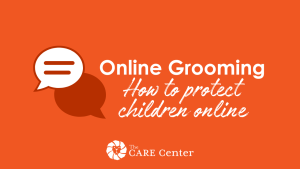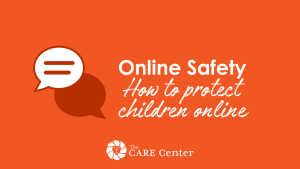Why is Kids Water Safety Important?
For most kids, water is fun and fascinating. Parents are rightfully concerned and cautious when water is near because kids aren’t fully aware of the dangers. Kids have a higher risk of drowning in very little water – whether at home or playing on vacation. As you think about water safety, here are a few recent facts and statistics to keep in mind.
- Drowning is one of the leading causes of death for kids. 12 percent of drownings in 2017 were kids ages four and younger. – National Safety Council
- Infant drowning deaths often happen in bathtubs and large buckets. – Safe Kids Worldwide
- 87 percent of drowning fatalities for children younger than five years old are in home pools or hot tubs. – Red Cross
- Young children can drown in only two inches of water – including toilets, inflatable pools and fountains. – Kids Health
- Most drowning and submersion injuries for children younger than five are associated with pools. – U.S. Consumer Product Safety Commission
Kids Water Safety Equipment to Buy
For kids, playing in the water can be fun, but safety equipment is essential to reduce the risk of drowning and other water emergencies. Our experts compiled a list of 10 safety tools to keep around the home and on vacation to help keep your family safe and prepared if danger arises. This water safety equipment was selected based on water safety standards, customer reviews and ease of use. Remember, no matter what gadgets you choose, they are to assist with watching your child, not a substitution.
How To Keep Pools Safe & Childproof
Pools are meant to be enjoyed, so take these steps to keep them safe and fun. To better understand the nature of pool safety, keep a few things in mind:
- Sadly, the possibility of pool injuries and fatalities is very real. Drowning is the leading cause of unintentional death for young children aged one to four. In 2018, between Memorial Day and Labor Day, at least 148 children under 15 years old fatally drowned in swimming pools or spas. For every death, twice as many children are hospitalized for injuries. 4-6 minutes underwater is enough to cause irreversible brain damage.
- Portable “toy” pools require security measures just like their permanent in-ground and above-ground counterparts. Portable pools account for 10% of drowning fatalities of children under 15.
- There’s no single safety device or protective measure that will completely childproof your pool or spa, or prevent every possible accident. Incorporate several types of the safeguards listed here into your pool safety plan.
- Devices and barricades aren’t a substitute for an adult with a watchful eye. Never allow a child near water unsupervised, even if they can swim.
Step 1. Set Up Pool & Spa Barriers
Physical barricades (walls, fences and covers) are the first line of defense. In some places, they are mandated by state or municipal law. At a minimum, home insurance policies typically require compliance with all local laws. Your policy most likely dictates that you’re responsible for any accidents that happen to pool visitors, even uninvited ones so it’s wise to block access.
What to Look for in Pool Fences
Children should not be able to get over, under or through the pool wall or fence by themselves. Exact recommendations depend on the style of barrier and the type of pool you have. Since local regulations vary or may not exist, these pool barrier guidelines from the U.S. Consumer Product Safety Commission are a good place to start:
- Fences around pools should be a minimum of four feet high; 5 feet or higher is preferable.
- Spaces in the fence should not be wide enough for a small child to fit through. If a fence has vertical bars, they should be no more than four inches apart.
- Holes, cutouts or stones in a wall or fence should not be big enough to provide hand and footholds. If there are cutouts in the fence (such as decorative shapes or lattice holes) make sure the openings are less than 1 ¾ inches wide.
- Chain link fences should not exceed 1 ¼ inches square. If the fence mesh is too large, attach vertical slats to close off the openings.
- Don’t put structures (like benches or large stones) nearby. These objects can help a child hop the fence.
- Gates to the pool area should have self-closing latches that are beyond the reach of children. No fence is secure if the gate isn’t closed.
It’s not always necessary to install a permanent, hardscaped fence. Relatively inexpensive mesh pool barriers may fit requirements when they are installed correctly. Every home is different, so hire a pool safety professional or a childproofing expert certified by the International Association for Child Safety (IAFCS) if you have any questions.
Choosing the Safest Pool & Spa Covers
Another way to prevent accidents is to keep the water covered. For smaller hot tubs and spas, rigid folding covers are better than soft floating covers because they block water access more completely. Consider using locking straps to secure the cover.
For pools, both manual and automatic covers are available. Manually laid covers stretch across the top of the pool (either by hand or a crank mechanism) and anchor into the pool deck. Automatically retracting covers tend to be easier to use, but also more expensive. If you have an automatic cover, keep the controls out of reach of children.
Another option is a pool safety net, which stretches over the surface of the pool and anchors down around its perimeter. When installed correctly, their strong synthetic materials catch and support kids that tumble in.
Step 2. Secure the Gates & Doors
Consider all the pathways that children could follow from inside the house to the water. Add security devices that make it harder to pass through unsupervised.
- Depending on the door style, childproof doorknob covers, lever locks and sliding door locks are great additions to doors that lead outside (or anywhere else that’s off limits). They’re inexpensive, easy to install and unobtrusive.
- Gate alarms sound a signal when they open, so you’ll know right away if an active child breaks through. There are several options specifically designed for pool safety. Consider adding alarms to windows or doggy doors if any of them access the pool area.
- If there aren’t any preexisting fences or gates (or the current barriers are easy to crawl over), use baby gates or freestanding play yards to help keep little ones to a defined perimeter.
If you’re still concerned about kids getting into the pool after you’ve secured the area, you can also consider getting a pool alarm, an in-water motion detector that sounds alerts when activity is detected. There are even wearable alarms for little escape artists.
Step 3. Inspect Pool Drains & Drain Covers
Pool and spa drains can create underwater suction with enough force to trap even strong swimmers below the surface. Several tragic accidents have occurred where children pulled into the drain did not only drown or nearly drown, they also suffered physical injuries from the drain itself.
In 2008, the Virginia Graeme Baker (VGB) Act passed, requiring all public pools to have anti-entrapment drain covers. Home pools are not bound by this law, but drain safety should be considered a requirement nevertheless. Make sure all drain covers are clean, VGB-compliant, and not broken or missing.
Step 4. Maintain the Pool & Cleaning Chemicals
When used properly, chlorine kills waterborne bacteria and parasites in a way that’s harmless to humans. But less-than-clean pools and mishandled chemicals can lead to irritation, illness and even fires or explosions.
Keep chemicals completely out of reach of children, preferably locked up. They should be stored separately from other household cleaners due to the potential for chemical reactions that can cause combustions, The storage area should be kept clean from leaves, dirt and other debris; chemical spills should be cleaned up immediately. Request material safety data sheets (MSDS) from your pool chemical dealer and keep them nearby in case you have any questions about how to use, handle or store the cleaning agents.
Step 5. Enforce Pool Safety Rules & Skills
This pool safety step is never truly finished. Parents must remain vigilant about monitoring kids in and around the pool. Kids should be taught not to run around the pool, to never enter it alone and to never play near pool drains or jets.
Be mindful about which toys and floatation devices you allow and enforce responsible play. Many experts suggest bypassing slides and diving boards completely. Remember that life jackets and floats are only secondary safety items, and they’re not enough protection on their own.
Family swimming lessons are also highly recommended, but they don’t guarantee safety. To be as prepared as possible, parents and caretakers should also learn the signs of drowning (you won’t usually see splashing or flailing) and consider becoming CPR/First Aid Certified.


